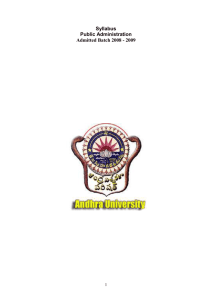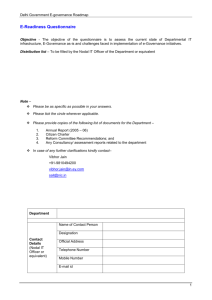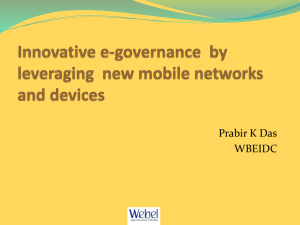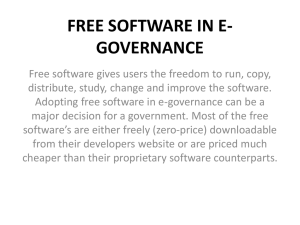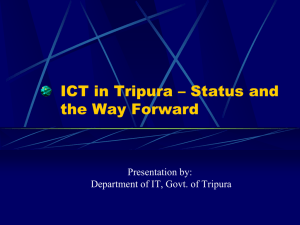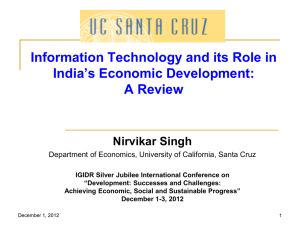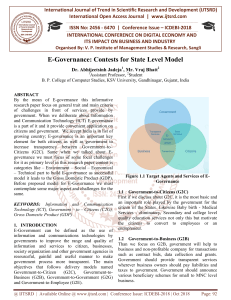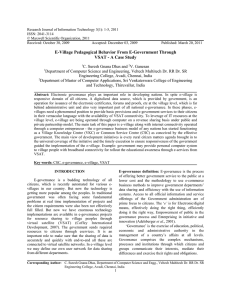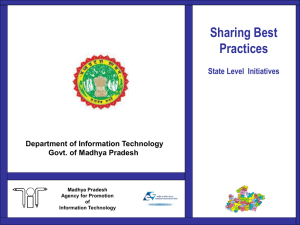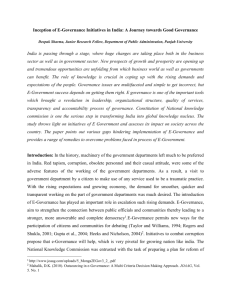Samagra Samajik Suraksha Mission - AeGM Training
advertisement
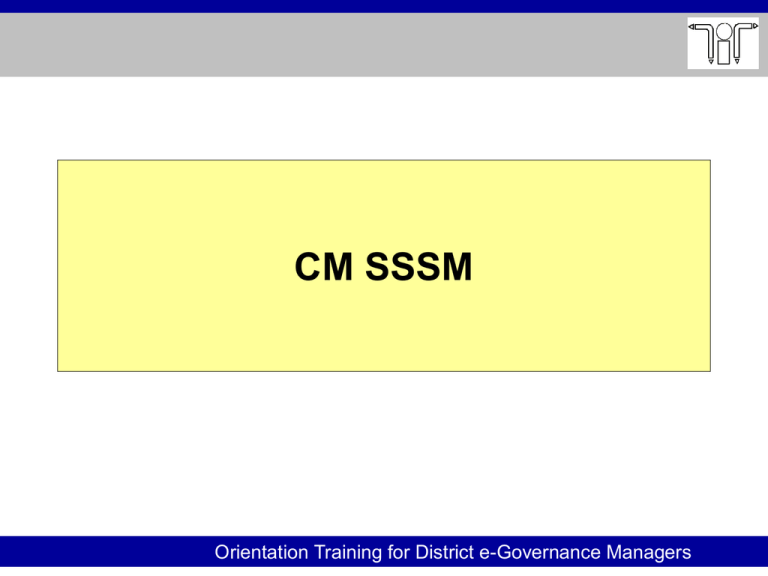
CM SSSM Orientation Training for District e-Governance Managers Chief Minister Samagra Samajik Suraksha Mission Samagra Samajik Suraksha Mission is a way for governments to use the new technologies to provide people with more convenient access to government information and services, to improve the quality of the services and to provide greater opportunities to participate in the democratic institutions and processes. These include gains in efficiency and effectiveness from better use and management of information, whether in support of policy making or the administration of programs. Intranet technologies offer the possibility of establishing knowledge bases and cross departmental working. Chief Minister Samagra Samajik Suraksha Mission is defined as “the application of electronic means in (1) the interaction between government and citizens and government and businesses, as well as (2) in internal government operations to simplify and improve democratic, government and business aspects of Governance.” Orientation Training for District e-Governance Managers 2 Objective of CMSSSM The department has identified the following objectives from the IT / egovernment initiatives 1) 2) 3) 4) 5) 6) 7) 8) 9) To speedup the departmental process To bring the efficiency and transparencies To interconnect with other departments like Health, Education, UADD etc. Accept complaints and resolve them within lowest time All information about schemes should be available online and citizens should have easy access to it. Provide information on 24x7 basis At least one computer set in each office should have Internet facility Department should reach the remotest area of the state and services are delivered through “Single Window System” The department would like to publish the amount disbursed to the beneficiary against each scheme through CM SSSM online application. Orientation Training for District e-Governance Managers 3 Benefits of CM SSSM e-Governance can fundamentally change the way government operates and relates to the stakeholders, for example: 1) 2) Tighter integration of delivery networks Horizontal integration within Government, across departments, organizationally and functionally; 3) Change in role from that of an implementer to that of a facilitator; and 4) Citizens gain greater visibility and insight into Government activities. 5) It is the transformation of government to provide Efficient, Convenient & Transparent Services to the Citizens & Businesses through Information & Communication Technologies. 6) CM Samagra Samajik Surksha Mission is the continuous optimization of government service delivery and governance by transforming internal and external relationships through digital technology, the Internet and new media. 7) Timely and regular payment of pension & Cost and Time saving for beneficiary 8) Elimination of Middlemen. 9) Inculcation of saving tendency amongst beneficiaries 10) Introduction of new model enabled doorstep delivery of the govt. services. 11) SMS alerts keep the beneficiary updated about the status of their bank account Orientation Training for District e-Governance Managers 4 E-Governance Prioritization Framework 1. It is essential the services of the department are provided through the gradual stages of eGovernance. Investing in the right services is a critical factor for the success of the e governance initiatives and accrual of the benefits to the stakeholders of the department. The move towards eGovernment should deliver key and tangible benefits to the stakeholders of the department. 2. Department officials has followed a structured approach to identify what and when such “e-enablement” should take place. We have implemented the approach of ‘Service Value Analysis’ to arrive at ‘Implementation priority’. 1. Compile the List of Services 4. Prioritize the Implementation of the Initiatives 4 Way Approach 2. Collect Information & Statistics about the Services 3. Prepare a Service value matrix Orientation Training for District e-Governance Managers End to End Process Flow Orientation Training for District e-Governance Managers 6 E-Governance Manager Support to 1) 2) 3) 4) 5) 6) 7) 8) 9) Define and manage service levels Manage third-party services Manage performance and capacity Ensure continuous service Ensure systems Security Assist and advise customers Data availability far digitization, validation of data Educate and train User and Coordination with other department Orientation Training for District e-Governance Managers Orientation Training for District e-Governance Managers 8

